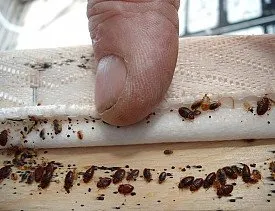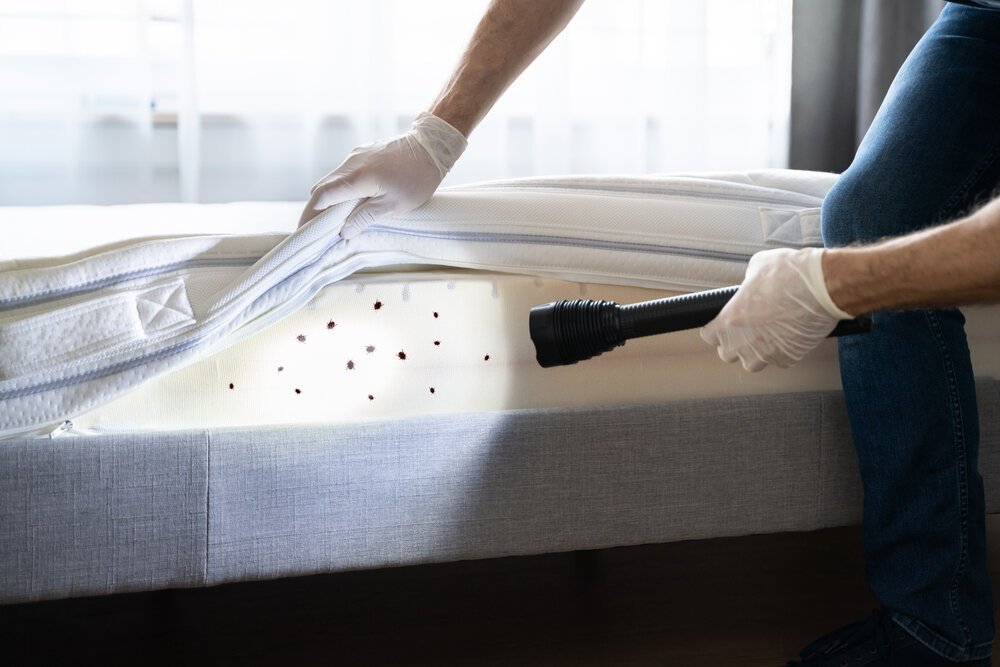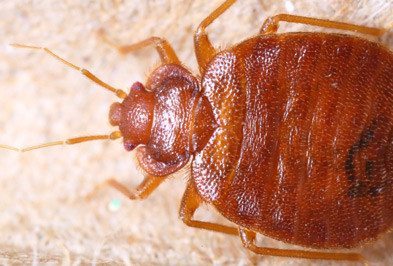Parasite Control Services Demystified: The Scientific Research Behind Getting Rid Of Parasites and Insects
Pest control services play an essential function in preserving the wellness and safety and security of our living and workplace. Behind the apparently regular job of getting rid of parasites exists a fascinating globe of clinical concepts and methodologies that drive the process of insect monitoring. From comprehending the intricate behavior patterns of insects to utilizing cutting-edge innovations for their removal, the world of parasite control operates a foundation of knowledge that expands far beyond merely getting rid of unwanted trespassers. As we check out the intricate science behind bug elimination, we uncover a world where biology, modern technology, and chemistry assemble to combat these durable enemies.
Pest Habits Evaluation
Examining parasite behavior is vital in creating effective pest control strategies for both domestic and industrial settings. By recognizing the behaviors and patterns of parasites, bug control experts can execute targeted and reliable remedies to remove problems. One vital aspect of pest actions evaluation is determining the particular variables that draw in pests to a specific area. This could consist of accessibility to food resources, water, sanctuary, or desirable ecological conditions. For instance, some parasites are drawn to areas with high wetness levels, while others are attracted to waste or natural matter.
Furthermore, studying bug actions aids in determining the most suitable techniques of bug control. Generally, a complete evaluation of insect actions is essential for establishing tailored pest administration plans that are both environmentally pleasant and very efficient.
Integrated Parasite Monitoring Strategies
Integrated Insect Monitoring Techniques entail detailed strategies that utilize a combination of safety nets, organic controls, and monitoring to successfully handle bug populaces. Safety nets aim to remove aspects that attract pests, such as food and water sources, by implementing appropriate cleanliness practices. This consists of securing fractures and gaps, dealing with leakages, and saving food in airtight containers. Biological controls involve introducing natural predators or parasites to manage pest populations, lowering the demand for chemical pesticides. Launching ladybugs to prey on aphids in a yard is an usual biological control approach. Tracking plays an important duty in Integrated Insect Administration by frequently inspecting and recognizing pest populaces to determine the most appropriate control approaches. By utilizing a mix of these strategies, bug control solutions can minimize the environmental impact of bug management while efficiently reducing pest populations in a sustainable manner.
Eco-Friendly Parasite Control Solutions
With a concentrate on sustainability and ecological consciousness, eco-friendly bug control solutions offer a natural and effective choice to traditional chemical pesticides. These methods prioritize making use of non-toxic ingredients originated from plants, minerals, or various other natural sources to fight pest invasions without creating damage to the atmosphere, people, or non-targeted types.
One preferred environment-friendly method is organic insect control, which entails introducing all-natural killers, bloodsuckers, or pathogens to manage modern pest control insect populations. By using the power of nature's very own checks and balances, this method can successfully control insects without the demand for hazardous chemicals. In addition, agricultural pesticides stemmed from plants like garlic, neem, and pyrethrum have actually shown guarantee in fending off or killing insects while continuing to be risk-free for beneficial pests and animals.
In addition, environmentally friendly bug control remedies frequently focus on preventative steps such as sealing entry factors, removing food and water sources, and preserving proper sanitation to discourage parasites from infesting buildings. By integrating these lasting methods, pest control solutions can properly eliminate insects while minimizing environmental influence.

Duty of Technology in Pest Elimination
Modern improvements in modern technology have reinvented the area of insect elimination, boosting the effectiveness and performance of pest control solutions. The integration of innovation in insect management has actually significantly boosted the accuracy of insect detection, enabling for targeted treatment strategies. Among the vital technical devices in parasite control is making use of remote tracking tools, such as video cameras and sensors, which aid in determining insect hotspots and monitoring parasite activities. These gadgets supply real-time information, enabling insect control professionals to make educated choices quickly.
Moreover, the growth of environment-friendly pesticides and baits that are a lot more targeted towards details pests has been implemented via technological innovations. This targeted technique lowers the overall usage of chemicals, lessening environmental effect while effectively managing pest populations. Additionally, using drones for aerial surveys and targeted chemical application in hard-to-reach locations has structured parasite control procedures.

Importance of Normal Parasite Inspections
Routine bug evaluations are essential for maintaining a pest-free atmosphere and protecting against infestations from holding - philly best pest control philadelphia bed bugs. By performing routine evaluations, building proprietors can discover pest problems at an early stage, permitting swift and targeted treatments to remove the insects before they spread out and duplicate. These inspections provide an opportunity to recognize potential entrance points where parasites can infiltrate the facilities, enabling proactive measures to seal these access points and avoid future problems
Additionally, normal parasite examinations can assist safeguard the health and wellness of owners by guaranteeing that the environment stays without disease-carrying pests and irritants. Early discovery of parasites like rats, roaches, or bed insects can stop wellness dangers connected with their existence, such aaa pest control as allergic responses, contamination of food and water resources, or the transmission of diseases.
In enhancement to securing human health, routine insect inspections are important for protecting the architectural stability of buildings. Specific bugs, such as termites, can trigger considerable damage to wooden structures if left untreated. Via regular inspections, residential property owners can determine termite problems early and apply procedures to stop pricey architectural repair work.
Final Thought

Taking a look at pest actions is critical in creating effective bug control techniques for both commercial and domestic settings.Integrated Insect Monitoring Strategies include thorough approaches that use a combination of preventive steps, organic controls, and keeping an eye on to successfully handle bug populations. By utilizing a mix of these techniques, pest control solutions can decrease the environmental impact of pest administration while effectively minimizing pest populations in a lasting way.
One of the vital technical devices in insect control is the use of remote surveillance devices, such as sensors and cams, which assist in identifying insect hotspots and tracking bug activities (philly bed bug treatment philadelphia).In conclusion, comprehending insect habits, applying integrated insect this hyperlink monitoring strategies, making use of environmentally friendly solutions, integrating modern technology, and performing regular evaluations are important elements in properly removing pests